Update: Microsoft has confirmed that there will be seven versions of Windows 10, spanning from displayless IoT devices to fully-fledged workstations. Servers and big-iron machines will be served by Windows Server 2016.
With Windows 8 and today Windows 8.1, Microsoft tried – not entirely successfully – to deliver an operating system (OS) that could handle the needs of not only number-crunching workstations and high-end gaming rigs, but touch-controlled systems from all-in-one PCs for the family and thin-and-light notebooks down to
slender tablets.
When Microsoft pulled the curtain back on Windows 10 back in September of 2014, it was clear that, with an operating system optimized for PCs, tablets and phones in unique ways, the Redmond, Wash.-based firm was onto something. Skipping the Windows 9 name entirely, Microsoft issued a public preview of the shiny new OS later that autumn, known as Windows Technical Preview (WTP).
You can try it out for yourself through Microsoft's Windows Insider Program(nearly four million have, as of May 2015). You'll need a Microsoft account to get it, and it's worth bearing in mind that it's not the finished product, so it will be a bit rough around the edges.
- Is the new OS any good? Read our hands on Windows 10 review
Since then (and one more major reveal event in January 2015), new features have been rolling in with each preview build update. Now, with Microsoft's huge annual developer event, Build 2015, behind us, we were served up a bunch of Windows 10 news that you can dig through below. But before that, here are the most important bits of info from the past week:
Microsoft issued a preview of how Windows 10 will work on small tablets. The OS will operate using a tiled interface, much like Windows 10 for phones, but will also support desktop-grade Win32 apps when connected to a larger display. The company also recently revealed that Windows 10 will have support for emojis that depict the middle finger, not to mention that its race-neutral shade for emojis will be gray.
- How will Windows 10 work with Android apps?
Redmond also finally issues a preview of how Windows 10 will cater uniquely to enterprise users during its inaugural Ignite conference in Chicago. Essentially, IT users will have further control over updates and the ability to remotely install features and services on Windows 10 devices. And finally (and sadly), Windows 10 will mark the end of Windows Media Center – the app will not make it into the new OS, and no replacement or successor is in the works.
Seven shades of Windows 10
Windows 10 will be available in 7 versions, far more than one would have expected in the first place. While IoT, Mobile, Home, Enterprise and Professional were already confirmed, Mobile Enterprise and Education were unexpected. In comparison, there were only four versions of Windows 8.1 (five if you include Windows Phone 8) and one of them was Windows RT.
Microsoft clarified the free upgrade offer for Windows 10, adding that Windows 10 Home and Pro will be available for free to Windows 7 and Windows 8.1 users that have appropriate licenses (presumably, Windows 8.1 Home users will only be able to upgrade to Windows 10 Home).
Cut to the chase
- What is it? A complete update for Windows
- When is it out? Definitely summer, but likely late July 2015
- What will it cost? For Windows 7 and 8.1 users, it will be free for one year
The highlights from Build 2015
While we didn't get that coveted Windows 10 release date or a look at the first ever Windows 10 devices, Microsoft did offer quite a few meaty nuggets of info during its Build 2015 conference at the Moscone Center in San Francisco, Calif.
On Day Two of the conference, Microsoft didn't have as much big news to offer up. It's not necessarily surprising, given the developer bent of the show, but nevertheless deflating. That said, a few interesting developments did come out of the second keynote.
For starters, Microsoft announced that Windows 10 is now available on the Raspberry Pi 2 micro computer and Intel Minnowboard Max. Some specific tailoring had to be done to fit the operating system on these tiny machines, resulting in this version of OS earning the name Windows 10 IoT Core. Folks can test out the special software now, as your feedback is sorely needed.
Then, Microsoft showed off a demo website showing the company's Machine Learning and face recognition platforms at work. Called How-old.net, the goofy site takes photos of people and, based on several factors, attempts to guess how old those people are. It's not exactly foolproof, but it's also just a demo.
Finally, we got some quality hands on time in with Edge, Microsoft's official name for the Windows 10 browser. It doesn't yet have those fancy features that were shown off on the Build 2015 stage, but we were able to play with the Inking and sharing features. The early verdict? Unsurprisingly, it needs a lot of work.
On the first day, Microsoft EVP of Operating Systems Terry Myerson surprised the crowd when he announced that Windows 10 will support apps written for iOS and Android. That is, with some reworking, of course. Still, this will undoubtedly blow the Windows 10 app store wide open.
When Microsoft Corporate VP of Operating Systems hit the stage, he immediately dove into a host of minor –but very welcomed – tweaks to the Windows 10 interface design. First, the Live Tiles within the new Start menu are now animated as they were in Windows 8 to bring it more life. Second, that same Start menu is now slightly translucent, much like window panes were in Windows 7 through its Aero Glass feature.
Belfiore then went into changes that are incoming to the Windows 10 lock screen. He detailed some updates to the Spotlight feature, a more service-driven, personalized and lively take on the lock screen. In Windows 10, this screen will allow users to choose what kind of images appear on that dynamic screen by choosing their favorites.
More importantly, Spotlight in Windows 10 will suggest apps and tools that users may not yet have used yet. Belfiore used the example of Cortana, Microsoft's voice-based virtual assistant. If a user had yet to use the feature on a fresh install of Windows 10, the system will soon recommend that he or she check it out and make that easy to with some custom buttons.

Speaking of which, Cortana will soon serve up information based on how people search the web and how they use their PCs. The Cortana interface will also serve up suggestions for new apps based on what people search for, too. Finally, Cortana will be able to interact with apps through just voice control – Belfiore on stage had the tool send someone a message through Viber without pressing a button.
Then Belfiore let loose the official name for Project Spartan, the new and improved default browser for Windows 10: Microsoft Edge. He than went on the detail the New Tab, a more interactive page for the "new tab" function used a billion times a day by browser users. The new, New Tab will feature a search bar followed by a collection of the top sites that you visit, below that will be a collection of news stories by partner websites, not to mention weather, suggested apps and a sports ticker.
Finally, Belfiore detailed how Microsoft's Continuum works on Windows 10 for phones. After hooking a Windows phone up to a monitor using mini HDMI and connecting a Bluetooth mouse and keyboard, the interface on the phone immediately adapted to the new environment in a desktop orientation.

When is the Windows 10 release date?
Frankly, we don't know yet exactly. (A certain CEO seems to know, but more on that in a moment.) What we do know is that, according to Microsoft's Terry Myerson, the OS "will be available this summer in 190 countries and 111 languages."
What we also are factoring in is, with the Windows 10 launch at the end of July, we are watching the impact of that on the back-to-school season' – AMD CEO Lisa Su
If you were peeved by the vague choice of words in Myerson's announcement, then chip maker AMD's CEO Lisa Su has a juicy nugget of information for you. During a recent quarterly conference call, Su let loose in a comment that AMD is anticipating a "Windows 10 launch at the end of July."
However, Su didn't specify whether this launch at the end of July was for hardware manufacturers (known as release to manufacturer, or RTM) or the general public.
All of this language, both official and mistaken, seems to line up with a February 2015 report from Windows blog Neowin, citing sources claiming that Windows 10 will release to manufacturers this coming June. Getting laptop, tablet and phone makers ready for the back to school season with fresh copies of the new OS well ahead of time only makes sense.
With all this in mind, it's safe to expect a Windows 10 release by the end of August. Or, technically speaking, by September 22 – the day before this year's autumnal equinox – if you want to put an exact deadline on it.
That said, not all Windows 10 releases will be treated equal. Microsoft's Belfiore hinted recently that Windows 10 will likely release for PC first and then later in the year on devices like phones, tablets, Xbox One and more. So, yes, Windows 10 will launch this summer, but not on every screen you own.

How much will Windows 10 cost?
Myerson announced in January that Windows 10 will be free for Windows 7 and 8.1 users for its first year. While there's no word on pricing for users still on an older version, Microsoft confirmed a while ago that the two most recent Windows versions will be able to upgrade to Windows 10 directly.
Microsoft's chief blogger Brandon LeBlanc also confirmed that Microsoft will support those who scored a free upgrade to Windows 10 with security and system updates for the lifetime of those Windows devices.
In May, Microsoft confirmed that the two versions of Windows 10, Home and Pro will be free for Windows 7 and Windows 8.1 users that possess a genuine, valid licence.
Neowin also reported back in February that Microsoft has trademarked the term "Windows 365," supposedly with the intent of it being a service. The news and speculation has sent folks buzzing about the possibility of a subscription-based Windows to come, though that's not likely to be Windows 10. Oh, we hope not.

How will I get to download Windows 10?
Thanks to some digging by ZDNet and Windows blog Myce, we've learned that – for Windows 7 and 8.1 users – getting Windows 10 will operate much in the same way that new builds are released in the WTP.
Later this year, after users agree to download the latest update from the Windows Update tool within the Control Panel, four scheduled tasks will be at the center of it all. One of which kicks off an "appraiser" app that is run to check for prerequisites for the download and upgrade that are about to follow.
For Windows 7 and 8.1 users, Windows 10 will be free for one year. After that period – not to mention for standalone copies of the OS – the asking price is still a mystery.
Inside of a discovered folder titled just "GWX" (Get Windows 10) is where things get even more interesting. The XML file in there opens up with the "Anticipation UX" that will bring a pop-up advertisement that informs the user of the update. Following that, there is a "Reservation Page" that will presumably allow users to opt-in to Windows.
Following this is the upgrading, download in progress, download complete, ready for setup, setup in progress, and setup complete phases that will get underway by themselves.
See? The whole process is almost identical to the one that Windows Insiders currently go through for new Windows 10 Technical Preview releases.

What's new in Windows Technical Preview?
The latest WTP build available for all testers is build #10074, released during Build 2015. The update builds on what was released in the last stable build, namely streamlining the Virtual Desktop experience and giving the Photos app some much-needed functionality.
Build #10074 brings the debut of the resizable Start menu from "Fast" ring build #10056, not to mention the first look at Microsoft's new Mail and Calendar apps in a stable environment. Most importantly, this version gives users their first look at Microsoft Edge, the company's new default browser for Windows 10. The release also includes the translucent, resizable Start menu as well as deeper Cortana functionality and Live Tiles on the Start menu.
More importantly, Microsoft detailed how the Windows Technical Preview will end later this year. For build numbers 9841 through 9879, those already stopped booting on April 30. For build numbers 9926 through 10049, those will stop working on October 15 – well after the final release of Windows 10, of course.
What Microsoft hasn't seemed to address yet is how folks who installed Windows 10 outright on a machine will be able to "upgrade" to the final version once it launches this summer.
Further updates are in the works (already)
Before Windows 10 has even launched, Microsoft's upgrade plans for the OS have leaked. Operating under the codename "Redstone", the Windows maker will issue updates in two waves.
According to Neowin's report, the first will come June 2016 and the other October of next year. But don't expect huge, sprawling changes from these updates – they're likely to be tweaks to the new OS for specific types of hardware and other improvements.

The Start menu: bigger, better, stronger
The return of the Start menu that Microsoft teased during its Build 2014 conference and detailed in full at subsequent events has been available for testing in the WTP since October 2014. Replete with a merging of the traditional Windows 7-style interface and Windows 8 Live Tiles, the new Start menu is designed to please both camps: touch and mouse users.
"They don't have to learn any new way to drive," Belfiore said, referring to Windows 7 users. That said, customization will also be featured throughout, first with the ability to resize the Start menu itself along with the Live Tiles within.
The Start menu features empowered search capabilities as well, able to crawl your entire machine, not to mention web results. We know now that this is through Cortana, Microsoft's voice assistant, but more on that later.

Step into Microsoft's new Office
Back in February, shortly after a leaked video on WinBeta revealed Microsoft's Universal (now known simply as Windows) Office apps in detail, the company issued an update to the Windows 10 Technical Preview with just that. If you're not doing so already, WTP users can test out the new Word, PowerPoint and Excel Universal (or Windows) apps.
Like the whole of Windows 10, these apps are designed to work on Windows 10 laptops, tablets and phones. This update comes in advance of Office 2016, Microsoft's desktop-based version of the suite, which we expect to see debut in the second half of 2015. It's likely that Office 2016 will interact with its Windows app counterparts through OneDrive and other solutions.
And back during MWC 2015, Microsoft squeezed out a few more details surrounding the touch-centric Office 2016, namely cosmetic makeovers for Outlook, Word, PowerPoint and Excel. Also, Outlook will be more deeply integrated with its sister apps than ever before. Finally, the new Insights and Tell Me features will let users search the internet from within Office and create search-based command prompts, respectively.
Today, both general users and IT pros-slash-developers can preview Office 2016 on Windows and Mac OS X. Plus, we've finally got the skinny on what the differences are between the simply-named Office for Windows 10 and Office 2016.

Windows Phone fans get a sneak peek
After much teasing leading up to an event during MWC 2015, a Technical Preview of Windows 10 for phones was released to just about every Lumia device under the sun.
Handled much in the same way as it is on desktop, the WTP for Windows 10 on phones has introduced alpha-phase features like the Project Spartan browser, the new Outlook and a much-improved camera app that borrows heavily from Nokia's camera app for its pre-Windows-buyout Lumia phones.
As for when it's coming to everyone in a final release, there have been far fewer rumors and scuttlebutt than we've seen around Windows 10 for PCs. It's assumed that Windows 10 will released simultaneously across all supported device categories, including phones, but Microsoft has yet to address that publicly.

Cortana is warping to the PC
That's right, Windows 10 will see the spread of Cortana, Microsoft's Siri and Google Now competitor, into Windows PCs and tablets in addition to phones. Microsoft's Joe Belfiore showed off the new PC-centric features within Cortana during its January reveal event.
Namely, Redmond developed PC-specific functions into Cortana for easier access to files, apps and more. Belfiore demonstrated colloquial queries like, "Show me photos from December," to which Cortana summoned images within that time period immediately. The idea here is to make key pain points in interacting with a PC easier than before through voice.
Since then, Microsoft has gone on to discuss how Cortana is more about machine learning, or computer systems and services becoming smarter over time based on user behavior, than simply retrieving files and facts for you. Plus, it was recently reported by Reuters that Microsoft has aims to release the voice assistant to iOS and Android.

Microsoft gets an Edge
During the Build 2015 conference, Microsoft's Joe Belfiore outed Project Spartan as Microsoft Edge, the official name for the company's Windows 10 browser of choice. The original details follow.
Project Spartan, essentially the company's replacement for Internet Explorer, was revealed during the January event, too. Belfiore detailed unique features, like the ability to mark up webpages before sharing them with others, and to comment on those same pages at the software level.
Once pages are marked up with drawings and comments, that page is frozen in time with live links and open for sharing through Windows 10's built-in sharing features. Spartan will also support built-in offline reading and PDF support, not to mention Cortana.
Microsoft's virtual assistant will be baked into Spartan and pop in with recommendations and help based on your browser behavior. Belfiore in particular demoed a scenario in which a user is en route to a flight. Upon opening the browser to find flight data, Cortana will pop in with that info before the user even needs to look it up.
Microsoft won't say it, but for all intents and purposes, Edge will replace Internet Explorer as the browser of choice in Windows 10.
Since the big reveal, Microsoft's Group Program Manager for Internet Explorer, Jason Weber, confirmed one big question: Spartan is not a replacement for Internet Explorer, but rather a second browser. Weber went on to explain that, while his team is heavily focused on making Spartan work with the rest of the web, IE11 will be kept for compatibility with legacy and enterprise websites. (So, in reality, Spartan will effectively replace IE for the majority of users.)
Microsoft's @IE Dev Chat account on Twitter later confirmed that the Project Spartan team is working on bringing extension support to the new browser. Furthermore, Microsoft confirmed to The Verge that the team is also working on a way for users to import Chrome extensions directly to Spartan.
Finally, Microsoft recently revealed that the popular "Do Not Track" browser option will be disabled by default in Spartan. The company claims that the feature no longer complies with the Worldwide Web Consortium's standard on the matter. Regardless, Redmond promises that it will provide users with directions for how to enable the feature.
If you're not in it already, you can test out Project Spartan on Windows 10 PCs and Windows 10 for phones right now in the "Fast" ring of their respective WTP programs.

Windows 10 and Xbox unite
Microsoft's Xbox lead Phil Spencer took the stage during Microsoft's big January event, detailing the Xbox app on Windows 10. The app collects all games played on any Xbox or Windows 10 device, a universal friends list and an activity feed. Every Windows 10 device will have the Xbox app pre-loaded.
Watch out, Steam Machines: Microsoft is 'investigating the possibility' of streaming PC games to Xbox One.
Users will be able to record game sessions through the Game DVR tool and share them across the Xbox network. Essentially, Windows 10 will bring the automated recording featured in Xbox One to games played on Windows 10 – even those launched through other apps, like Steam.
Around the time of GDC 2015, Microsoft updated the Xbox the app for Windows 10 for testing in the WTP with just about everything teased during the January event, including access to Xbox One game clips and options to search for friends and interact with the Xbox Live activity feed. Plus, the app can now better deal with window size changes. Finally, users can control the Xbox One through a virtualized remote control within the Xbox One app on Windows 10.
But back to the January event, Spencer also briefly showed off Microsoft's next collection of graphics and gaming APIs, DirectX 12. Namely, support for the platform has expanded to the Unity game engine, and DX12 enables low-power graphics processing for Windows 10 mobile devices.

Plus, Spencer and a Lionhead Studios representative demoed what it's like to play the same game through a Windows 10 PC and an Xbox One with friends at the same time. Basically, cross-platform multiplayer gaming is coming to Xbox One and Windows 10.
Finally, Spencer demoed the ability to stream any Xbox One game to any Windows 10 device from within the home over Wi-Fi. The Xbox lead also teased that several Windows 10 features will find their way onto Xbox One, but was mum on the details.
During GDC 2015, the Xbox chief let loose even more details regarding the increasingly intimate relationship between Windows 10 and Xbox One. For starters, Spencer revealed that soon all wireless Xbox One accessories will work on Windows 10 PCs.
Later during the show, we learned that Microsoft is "investigating the possibility" of streaming PC games to Xbox One. Currently, Microsoft is only committed to allowing the inverse, for all Xbox One games to stream to Windows 10 PCs.

Microsoft's Universal approach
During the January reveal event, Microsoft's Joe Belfiore revealed exactly what the company meant by "Universal apps" (now known as "Windows apps") when it first showed off Windows 10. Basically, the company is developing special versions of its key apps, like Office, for Windows 10 phones and tablets under 8 inches.
Apps like Word, PowerPoint, Excel and Outlook will look and feel nearly identical to their desktop counterparts, but be optimized for touch and screen size. And through Microsoft's cloud infrastructure, all of your files will be accessible on those devices regardless of where they were created.
Belfiore also detailed a brand new Photos app accessible from any Windows 10 device, pulling down images from the company's OneDrive storage service. The new app aggregates images from both local and cloud storage, eliminating duplicates and enhancing photos automatically.
Finally, the universal Photos app will also automatically create photo albums based on not only when and where photos were taken, but the subjects of those photos. The idea here is for managing photos to be simpler and more automated, taking things a few steps further than rival solutions.
Following the January event, Microsoft went on to confirm that its most important suite of Universal apps, Office 2016, will launch in the second half of 2015. This potentially puts Office 2016 ahead of Windows 10 in terms of release.

Keeping in touch
During the January event, Belfiore demonstrated its "continuum" approach to computing with Windows 10 – not just through different devices, but 2-in-1 products as well. Using a Surface Pro 3, the OS chief showed off what it will be like changing use cases on a Windows 10 device.
When the tablet was connected to its keyboard cover, the Surface Pro 3 acted as if it were a laptop, which it technically is. Then, as soon as Belfiore removed the keyboard, a small icon appeared in the lower right of the screen, asking him whether he'd like to activate tablet mode.
Doing so changed all of the apps to full screen, made icons slightly larger and allowed users to access the Start screen a la Windows 8, albeit much updated. As soon as he reconnected the keyboard, the device offered to revert back to its original mode, which then repositioned and resized the windows and icons as they were.

Paving the way for enterprise
Going way back to the first-ever Windows 10 reveal in September 2014, Microsoft spoke to enterprise users almost exclusively. "Windows 10 is a very novel approach of separating corporate and personal data across all devices," Myerson said on stage. "Windows 10 is going to be our greatest enterprise platform, ever."
Microsoft didn't exactly please its enterprise audience with Windows 8.1 – adoption has been awfully slow. (And now will likely halt with this new version on the horizon.) To that end, Belfiore even noted that the company is "looking to find the balance, so that all the Windows 7 users get a familiar experience on the devices they already have."
As of early February, Microsoft issued its plans for rolling out Windows 10 to enterprise users: through Windows Software Assurance program. While this program will offer several methods for enterprise users to upgrade their fleets of systems to the new OS, that also means it will not come free like it does for consumer versions of Windows 10.
The SA program is designed to give enterprise customers more control over when and how updates are pushed to their range of machines. Of course, the idea here is a focus on security and flexibility for IT through additional Long Term Servicing branches that provide security and critical updates only – barring new feature updates.
Shooting for security
Running the world's most ubiquitous OS, Microsoft has always taken security quite seriously, often releasing patches daily to its various versions of Windows. Now, the company looks to take its security measures for Windows 10 to the next level, with two-factor authentication (2FA) coming standard on enterprise versions of the OS, the company announced during its September 2014 reveal.
Microsoft also intends to protect user identities by storing user access tokens in a secure container that runs on top of Hyper-V technology, isolated from the rest of the OS. Windows 10 will also offer a data loss prevention solution that will allow users to separate their corporate personae from their non-work ones.
... and for your data?
Short after the release of the Windows 10 WTP, the OS was pegged for collecting user data. While this is a beta preview, and as such should be collecting feedback data, claims from a number of news outlets pointed to more even more sensitive information.
The Technical Preview reportedly has the capability to track and log keystrokes, capture voice data and more. This may be cause for caution, but keep in mind that almost all, if not all, modern operating systems track and log some level of usage data. Though, it's almost always anonymized.

It's still all about unity
Windows 10 will be "one application platform" for all the devices that run Windows, Microsoft Windows head Terry Myerson declared during the September 2014 reveal, with one store to rule them all. (So to speak.)
While on stage at the event, Microsoft showed images of the new operating system running on everything from desktop PCs to smartphones. In fact, Myerson confirmed that Windows 10 will be the driving OS behind its smartphone platform as well.
Myerson was mum on the naming conventions (e.g. whether Windows 10 on phones would be known as Windows Phone 10, et. al). But what matters is this: Windows 10 will be behind every device that Microsoft has a hand in.
Yes, that includes the Internet of Things
Based on CEO Satya Nadella's recent comments during Gartner's Symposium ITxpo in October 2014, Windows 10 is almost certainly being developed with the Internet of Things in mind.
"Windows 10 is a very important step for us." Nadella said on stage. "It's the first step in a new generation of Windows as opposed to just another release after Windows 8. General purpose computing is going to run on 200 plus billion sensors. We've architected Windows where it can run on everything."
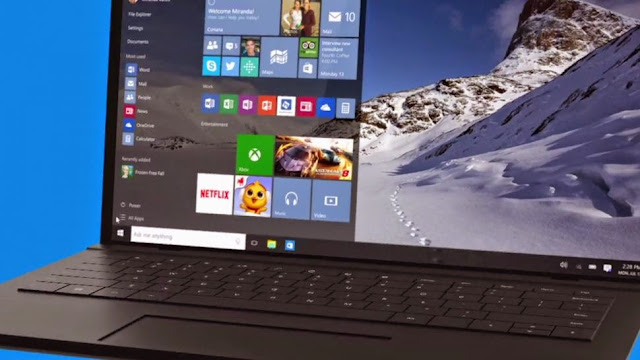

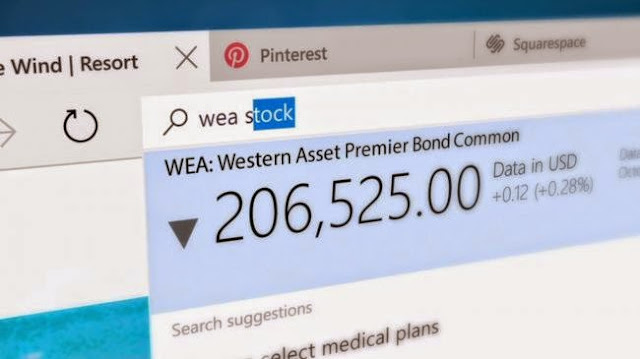
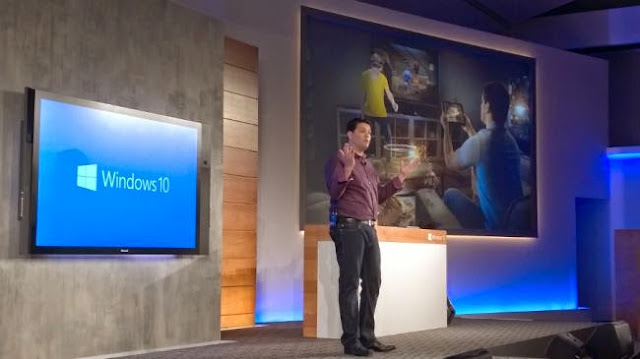
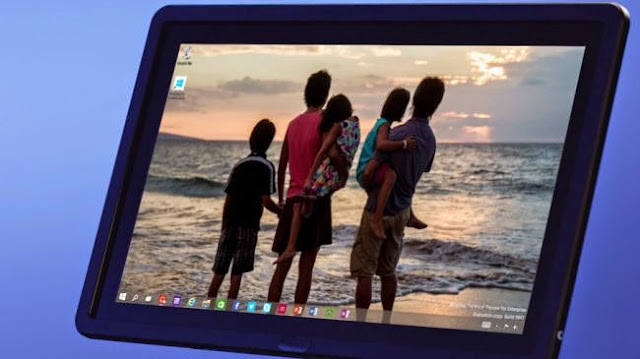
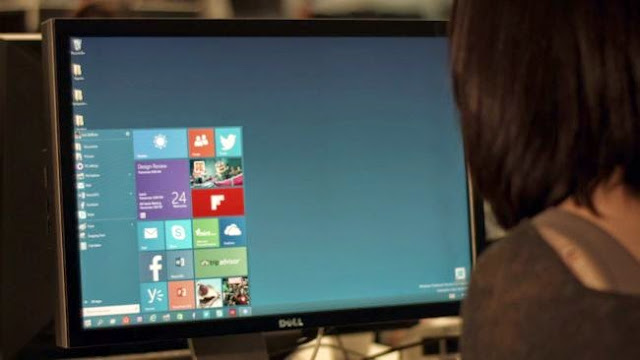
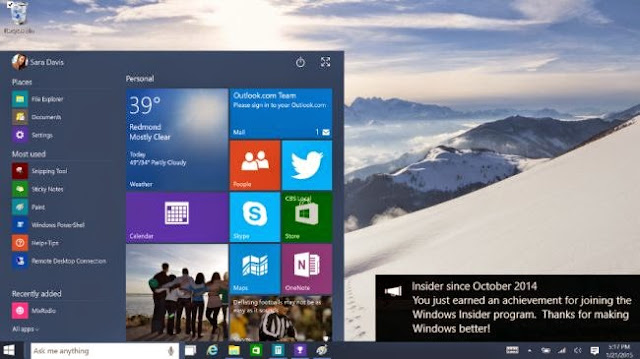
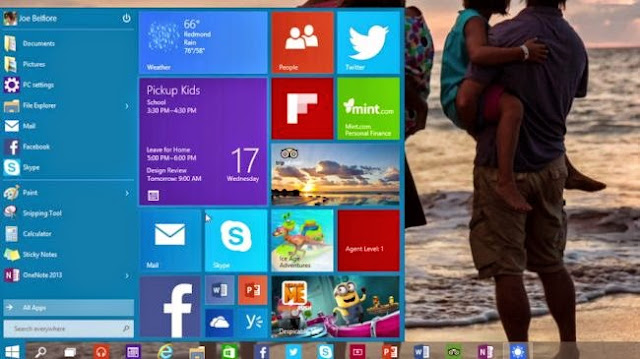
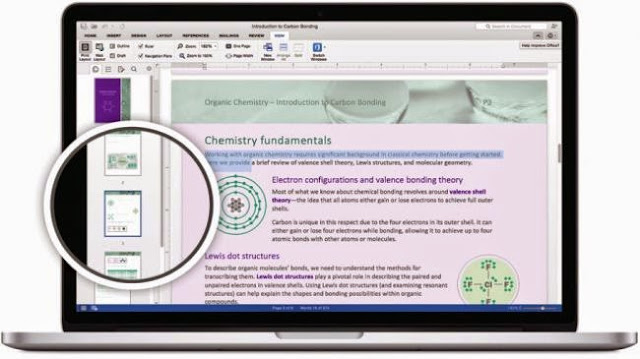

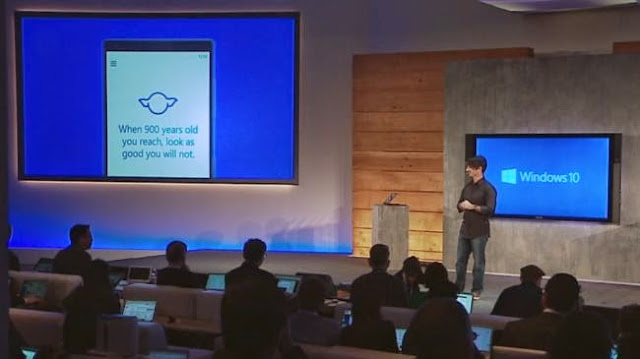
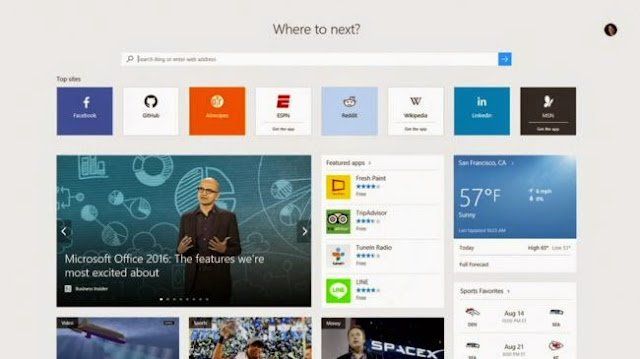
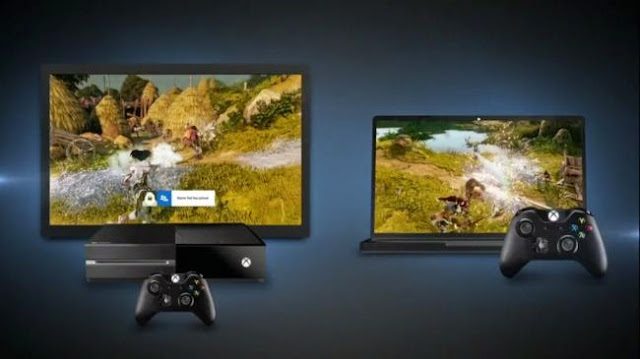


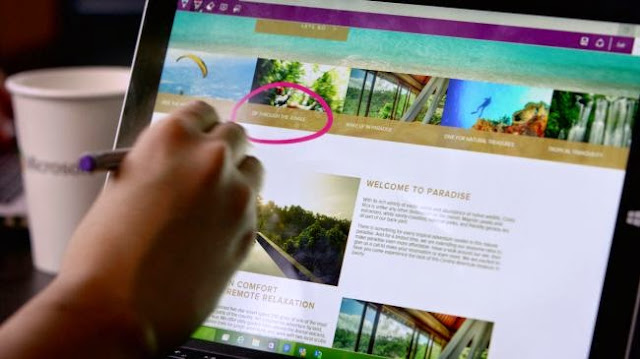

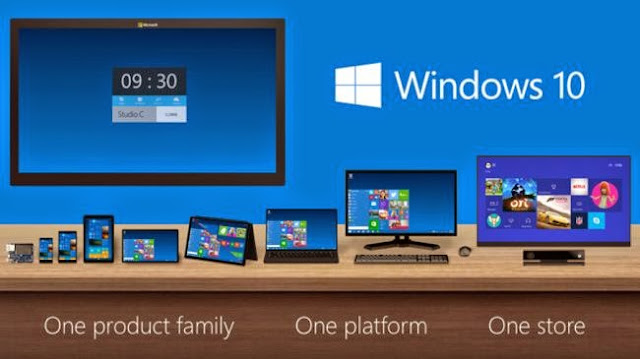
No comments:
Post a Comment
Leave a comment